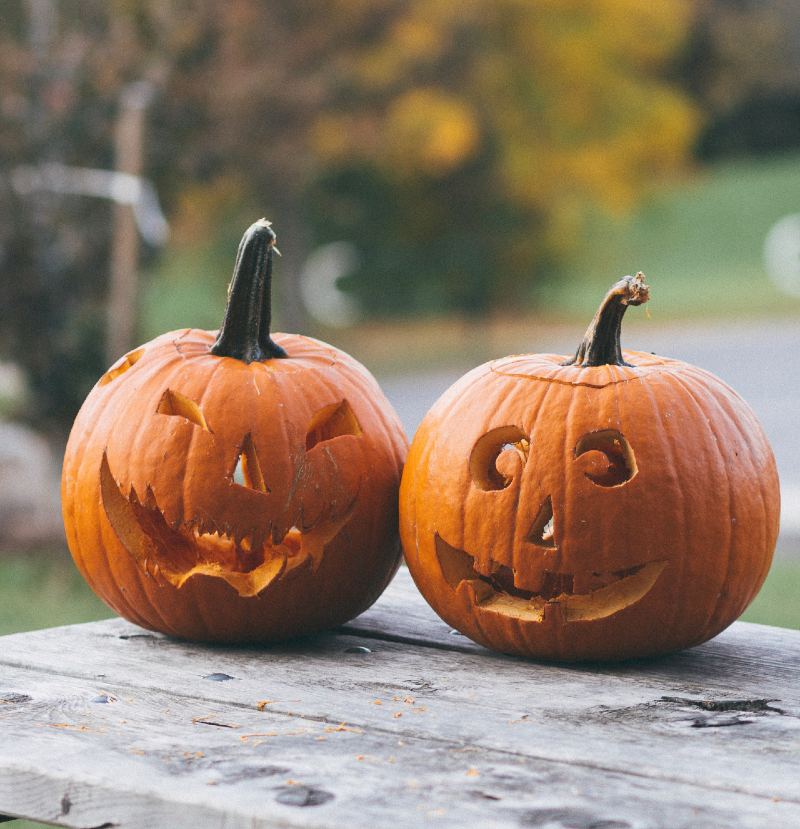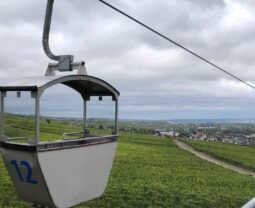Germans celebrate all the seasons, and they do it well! Christmas markets are the most famous, and, yes, they are amazing. But come visit a few months earlier and give fall a try. It’s a great time of year to experience Germany.
While not the color “power punch” we’re used to in the U.S., Germany has its own fantastic version of this fall color show. In the past two years, the leaves turned colors over a longer period of time–with lots of yellow and orange. There’s something breathtaking about the morning and evening light, which casts on the trees.
The fall leaves also make a perfect backdrop for castles and other tourist attractions, which are otherwise packed with visitors in the summertime. Since Germans are big on outdoor activities, it’s easy to find spectacularly beautiful places to hike, bike, canoe, or run in such perfect fall settings.
What does Germany have in fall that makes it so special? Just a few things you may or may not already know about.
Oktoberfest: The Granddaddy of All Fests

Oktoberfest, the most obvious and famous German fall fest, held in Munich each year starting in late September (not October). Make no mistake, if you want the full-on Oktoberfest experience, plan far advance. Between five to six million people descend upon the city during the two weeks of Oktoberfest. Reservations for tents can be hard to come by last minute, although, it’s probable that many tents leave some tables available for drop-ins. Hotels and apartments sell out months (or even a year) in advance.
If this Bavarian city isn’t on the travel list, not to worry. Many cities and towns around Germany host their own Oktoberfest celebration beginning mid-September and into early October. Check for specific dates because unlike the mothership Oktoberfest, these may only last a weekend.
Attending any Oktoberfest celebration means donning the right outfit. Traditional dirndls and lederhosen can range in price, quality, and designs. You’ll find less expensive costumes in department stores such as Karstadt, H&M, and C&A. Local shops with tailors will have more traditional and high-quality outfits.
Related: Family Layover in Frankfurt: How to Spend 24 Hours (or Less) in “Mainhattan”
Local Fall Harvest Festivals
The Germans love to party and will use any excuse for a fest, usually including pork and alcohol. Most cities and small towns will host some kind of Herbstfest. (Herbst means autumn.) These festivals draw in the normal vendors traditional German fest food—flammkuchen, Käsespätzle, wurst, Apfelwein, and other liquid favorites, as well as an assortment of food trucks with burgers, BBQ, and tacos. These festivals usually host local entertainment and include something around apples (juice, cake, wine). Our local fest brings in the apples and does the pressing right there for fresh apple juice. Watch out for the bees!
Related: 6 Reasons to Visit Heidelberg Castle with Teens
Trick or Treating at Halloween

The American holiday is slowly making its way to Germany. While German stores don’t begin displaying skeletons and bats in August, we did find costumes and modest decorations. Many Germans seem to resist this holiday (why, I have no idea), but we had more visitors trick or treating than in the U.S. (to be honest, because we live on a cul de sac in the US). The Germans have their version of trick or treat “susses oder saueres” and sometimes a cute little song that seems to translate as “We are scary witches at the window, give us treats or we won’t go away. “
A few house will throw up some decorations the day of (my kind of people) and get their pumpkin out on the stoop. But the biggest difference is the grocery store one hour before sunset: I watched people flooding through the local market and throwing candy into their baskets. The difference: The store still had candy!
For big-time scary fun, serious Halloween enthusiasts travel 30 minutes south to nearby Darmstadt to Burg Frankenstein. Each year, the town hosts a huge, and very scary Halloween party in the castle, which inspired the Mary Shelley novel and infamous creature. Actors dressed as ghosts and monsters wander around the candlelit castle frightening guests, and scary soundtrack adds to the ambiance. This free event has become more popular every year.
German Unity Day

Every year, Germany celebrates the day the East and West came together. Not celebrated with the same fanfare as the Fourth of July, certainly a fun time to visit Berlin with a huge festival near the Brandenburg Gate.
Related: Berlin: A Fall History Lesson for Teens
Perfect Weather for Hearty German Food

When the weather cools down, traditional German food like schnitzel, goulash, potatoes, and slow-cooked pork warms the soul and the belly. Germans eat this hearty food all year round, but that nip in the air almost makes me crave potatoes covered in some kind of sauce. Here are a few things you must try:
Flammkuchen: Also know as tarte flambée, this Alsatian dish resembles a very thin-crusted pizza. Typically topped with cream, onions, and ham, I find it becomes very seasonal during fall, and covered with pumpkin, squash, apples, or mushrooms.
Käsespätzle: Typically from Bavaria, this German version of mac and cheese is made with spätzle noodles, Emmentaler cheese, and topped with fried onions. Hot, gooey, cheesy, and served year round, fall is the time to really dig in an enjoy this comfort food.
Goulash Suppe: Technically, this belongs to the Austrian/Hungarians, but in many parts of Germany, especially down south, many restaurants make this hearty dish. When made with the right spicy paprika, this soup is the best way to warm up on a cold, rainy November evening.
Currywurst: While the Germans have an estimated 1,500 types of wurst, most are better suited with a crusty brotchen (small bread) and eaten at a fest. Currywurst, born in Berlin, is typically served off the brotchen bun and topped with a ketchupy, curry sauce. While this isn’t my favorite food, it has a fall feel to it so I recommend it as an option while getting cozy at the next autumn festival.
Bratkartoffeln: Translates to roasted potatoes, tastes like fries only better. Perfect with everything.
Sauerbraten: By far my favorite on the list (after the flammkuchen), we’re talking braised beef dish covered in a tangy sauce and served with potatoes or Knödel (see below). A perfect dish to welcome fall.
Knödel: Potatoes are a staple in Germany and served a million ways. This type of dumpling, typically made with potato flour, stirs up fond memories of my childhood. I used to love eating these covered in sauce (maybe with sauerbraten) and very warm in the belly on a cold evening.
Schnitzel: Lightly fried pork or chicken, this one really doesn’t need much explanation. In Vienna, you’ll get the traditional Wiener Schnitzel, made of veal only. This dish can very extremely variable restaurant to restaurant. I find it best when covered with a mushroom sauce.
Related: 13 European Foods to Try in Their Native Country
Grape Harvest for Wine

Harvest season for Germany’s wine region begins in August and lasts through September. Germany, best known around the world for its Bavarian beer, has another drink worth trying — the white wine. They keep it to themselves instead of exporting it.
Enjoy wine fests May through September, but the vineyards can really put on a show during harvest season. In every little town in Germany’s wine area (the western part) local vineyards set up stalls to “sample” wine. Wines typically cost between 2-5 euros for a .1 or .2 liter pour. You pay a deposit or “pfand” for the glass. When you return it, they will give you the money for the glass back or you can walk away with a new wine glass, usually for about 2 euros.
Related: 5 Rhine River Cruise Mistakes (and how to avoid them)
Sampling All the Fall Produce: Pumpkins, Mushrooms, Onions, Apples, Quince

The one sign of autumn is finding all the favorite fall foods on the local menus. As soon as August hits, onion (Zwiebel), pumpkin (Kurbis), and apple (Apfel) begin creeping their way into the stores and restaurants. As the months continue, an assortment of mushrooms will be on every flammkuchen or pasta dish.
Mushrooms are serious business in Germany and the season is short. For a perhaps a week or two, you’ll spot hordes of people on the side of roads in the forest collecting ridiculous quantities of mushrooms.





